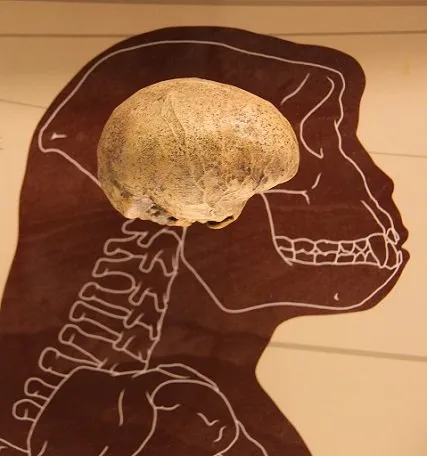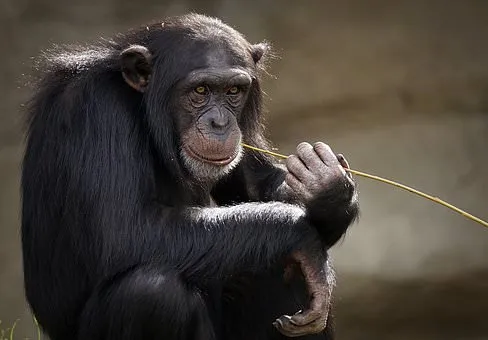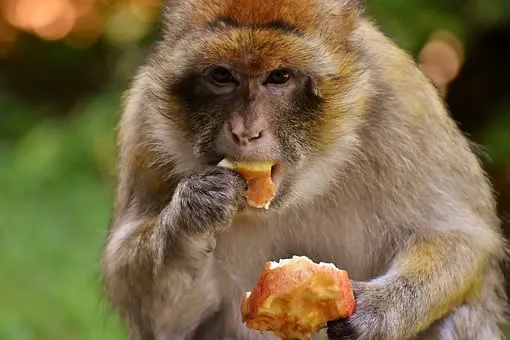Some weeks ago, we tried to debunk some shits about evolution, and guess what; we were able to counter some of the popular beliefs about evolution with enough evidences. At least, you’ve now believed that humans didn’t evolve from giant drop of milk; like the Fulanis believed, neither did they evolve from Turtle poops; like @lemouth humorously commented in one of his posts. Now that you’ve seen evolution from a different perspective, we need to know how we evolved down the line as beautiful humans, from some ugly sorry-arse Apes. In my last post, I promised I would further debunk some more misconceptions with time – so here we go.
INTRODUCTION
What made us humans? What unique features have we that have distinguished us from some other hominid species that lived before us, and also, in what ways are we similar to them? Length Alert: This post is somewhat long, but I guarantee that if you’re able to survive the length, you’d have a broader knowledge of how the evolution of humans has been trailed down to the extant modern humans (Homo sapiens sapiens). Again, I would be using “Homo sapiens sapiens” in lieu of just the “Homo sapiens” to distinguish between the modern humans and the thinking man – simply because there are other subspecies of the genus; Homo sapiens. Alright guys, let's get this shit rolling.
 [image Source: Pixabay (CC0 Licensed)]
[image Source: Pixabay (CC0 Licensed)] THE GENESIS – TOOL MAKING AND TOOL USAGE
No doubt, the ability of tool making remained one of the distinguishing factors in the classification and differentiation of Ape-men from Ape. But because of the bleakness in paleontological records, and also the lack of some transitional fossils, it has been a herculean task to pinpoint the exact species that initiated the use of tools, but some pointers have shown us to the right direction. The creation and the usage of “stone” tools (which was among the earliest of the tools used by ancient men) has been dated back to the Paleolithic era – which is somewhat around 2-3million years ago, and this was also the era of the ancestral grandpas of modern man; the Australopithecus, the Homo habilis et al.
But which species can be remotely credited for handling of tools first? Okay, looking at popular beliefs, you’d be quick to say “Homo habilis” (the handy man), of course, because of the “habilis” that sufficed the name; which also means “man with ability”. But looking at this remotely, the “ability” here indicates the creative power of making and fashioning tools on their own. That is; they made their own tools that they used, but it doesn’t infer that they were the first hominid species to make use of tools.
Can I shock you for a while? An earlier specie; the Australopithecus; which walked the planet over 2.4million years ago; has been proven to use tools – yes, you heard right. So why didn’t we call them Homo habilis or Australopithecus habilis? At least they also have the ability of using tools. The point here is; the Australopithecus made use of pre-existing objects as tools, but they didn’t specifically fashion their own tool to suit them [ref] – and some of these tools have been dug side-by-side with their fossils. So you see why they didn’t have the honour of going by the fancy name; habilis. And looking further remotely at this scenario, even though the Australopithecus was a major breakthrough in the evolution of modern humans, it didn’t form a part of the genus; “Homo”. Maybe this has gone to prove the point by Dr Kenneth Oakley (a renowned anthropologist) in his publication; Man The Tool-Maker; that tool-making is one of the major factors that shows the uniqueness of man. So by inference, if the Australopithecus didn’t fashion out their own tools, then there wasn’t even any need to included them in the subtribe of the “Homo” – well, I’m glad they weren’t though.
But the question that would be asked is; “is there a correlation between the brain size and the ability to make tools?” Hold on, I’m gonna present you with some facts, and you would then answer the question yourself. Before the emergence of the Australopithecus; way down the line; the Sahelanthropus and co (obviously with crude Ape features) had small brain size in comparison to their body size. Then after some millennia, the Australopithecus came on the scene (with some transitional fossils in between) with a slightly bigger brain – no wonder they made use of tools.
On further evolution up the line, the Homo habilis had a much bigger brain – and they were able to fashion out their own stone tools. And as evolution progressed, complexities were added to the creative acumen being possessed by species. You already know that when it came to the Homo sapiens neanderthalensis; those guys had some massive brains – and it was not surprising they commanded very advanced toolkits – I made reference to it in this post, you can breeze in to know shit about the brain size of the Neanderthal et al.
Coming back to my question; is there a correlation in brain size and the ability to manipulate tools? Have you heard of Homo naledi? The fossils of these guys were just discovered less than a decade ago; which has been described as one of the most advanced of the Homo species. And has been termed “mystery specie” – reasons being that they were endowed with extremely complex brain structure, though a little smaller than ours in comparison to their body size. But with the kind of markings and tools being excavated with their fossils, it only suggests high complexities in their brain structure. Did I tell you that “naledi” in that species is a nickname for “rising stars”? – well, so just you might know. So by inference; brain complexity is actually favored more than the size of the brain when it comes to tool making and usage.
That being said let us look at another area where our evolution speaks very loud.

DIETING – WERE OUR ANCESTORS OMNIVORES, CARNIVORES, OR FUCKING HERBIVORES?
How do you enjoy your food? Yeah I know; cooked or fried, with some spices and whatnot. But how did our ancestors have their own meal? If you are eating right now, you might want to summarize the food, because the info I’d drop here might dampen your appetite. Let’s start from way back to about 6million years ago – our crude ancestors; the Sahelanthropus tchadensis (even though with vague resemblance to humans, but they had more Ape features) lived a predominant herbivorous lifestyle – well, like Ape. They fed off on herbs, fruits, foliages, and even tree barks [ref]. This feature is not surprising for a specie that lived in the forest, so they had to adapt to their environment and helped themselves with the herbs they could lay their hands on. You wouldn’t be wrong to infer that humans started off as vegetarian species – so it is not uncommon that some people still stick to that path.
So how did meat-eating arrive on the scene? I’m sure you must have heard of the Zinjanthropus (paranthropus boisei)? These species were dubbed “nut cracker”, obviously, they also fed on nuts, together with herbs. But these nuts served as preparation of the introduction of meat eating. Of course, nuts have rich lipid content, and it prepared their guts for meat procession and digestion, because species wouldn’t have just jumped from eating herbs to munching tough meat. But the meat-eating wasn’t introduced until the arrival of the Australopithecus africanus - which can be inferred to be the first specie to incorporate meat into their diet [ref]. And by then, their guts were fully prepared to receive meat.
But how did they eat the meat? Was it cooked or grilled? – Of course they didn’t have ovens, so they couldn’t have made a proper barbecue. But what of fire, didn’t they have access to that? Truth is; the introduction of fire has been directly linked to the Homo erectus [ref] because of the presence of ashes that were excavated alongside these fossils – and we know that the Homo erectus came millennia after the Australopithecus. So if the Australopithecus never had access to fire, they must have munched on some raw meat like some fucking carnivorous animals… gross!!.
More gross is the fact that they didn’t even hunt for their own meat (not surprising for a 3.5ft tall creature), instead they ate from the remains and carcass of animals that had been killed by other animals. So as it were, they were more of scavengers... ewwww!! But with the introduction of fire and the mastery of the same, revolution arrived in their diet, and they had a much better meal. Even though it is yet to be uncovered the exact hominid specie that had the first cooked mean, but by all logical indication, the Homo erectus; being fully bipedal and upright; had freer hands to manipulate stuffs and utilize tools (including fire) efficiently, and they can be linked to being the first species to cook their meat.
And now, we’re fully adapted to omnivorous lifestyle maybe with the exception of vegans, lol, but our ancestors didn’t have that honor. So you see, as omnivorous as we can be, we started off from herbivorous ancestors; thanks to evolution. As you can see, evolution is simply the structural and the adaptative alterations within a specie, in response to changes in their environment.
FINAL WORDS
There are some blurred areas concerning evolution and we’ve tried to provide evidences to point us to the right direction. We’ve considered the fact that humans didn’t just start off as meat-eaters, but had a long trail of herbivorous lifestyle. Also, we’ve seen the usage and making of tools. Hope y’all have had a better view of the concept of evolution? With time, we’ll debunk some other bullshits about evolution.
Thanks for reading
References for further reading:
- How man emerged as meat eaters
- Evolution and introduction of fire
- humanorigins/evidences of human-fossils
- The first humans
- Evolution of Australopithecus and homo habilis - creation.com
- Extinct hominid species
- The appearance of the early modern Homo sapiens
- Hominid_species/tool-making
Vote for witness @stem.witness


gif by @foundation




